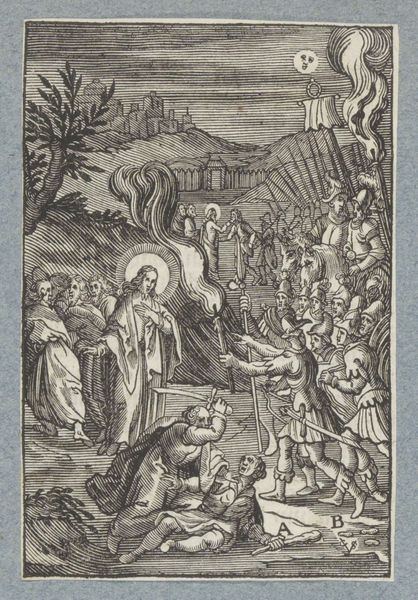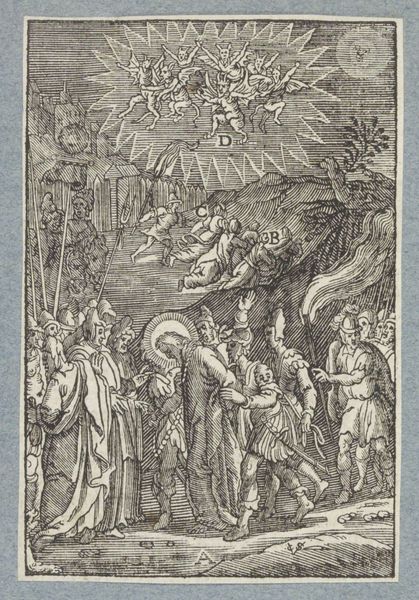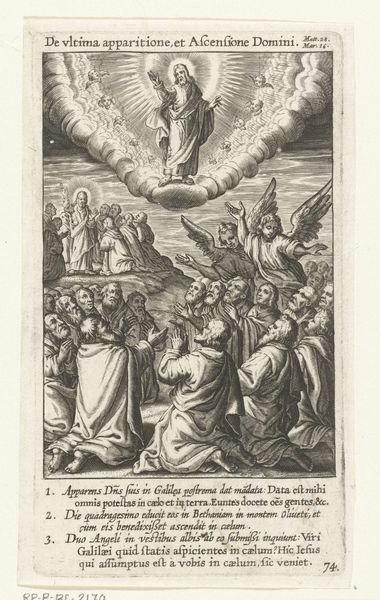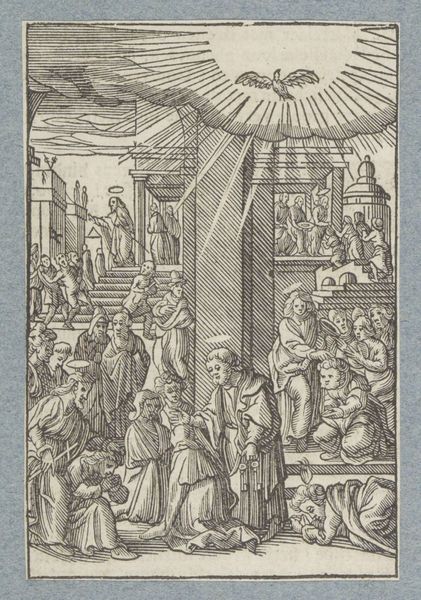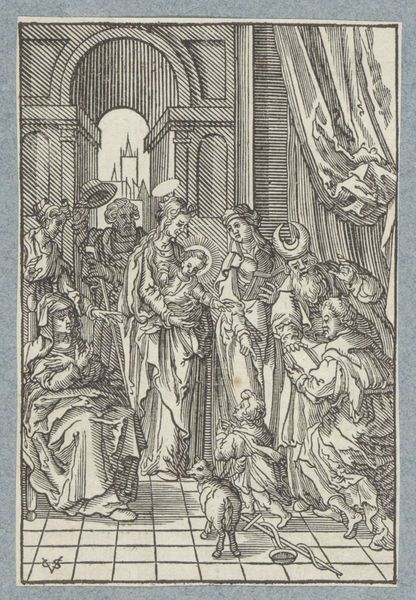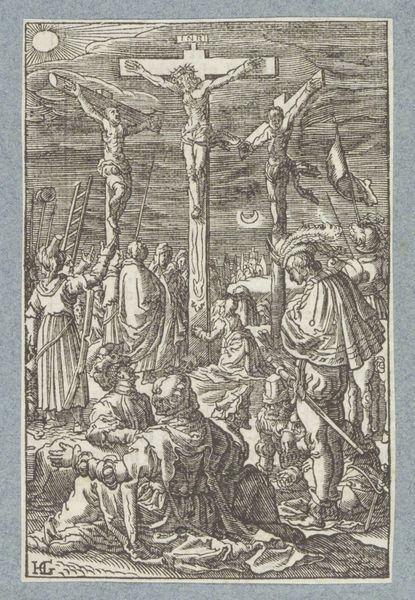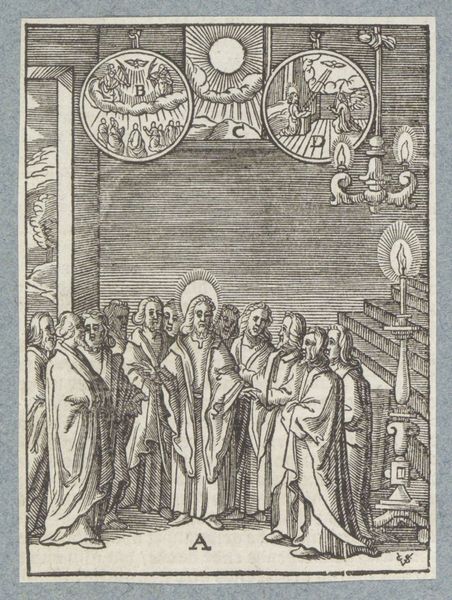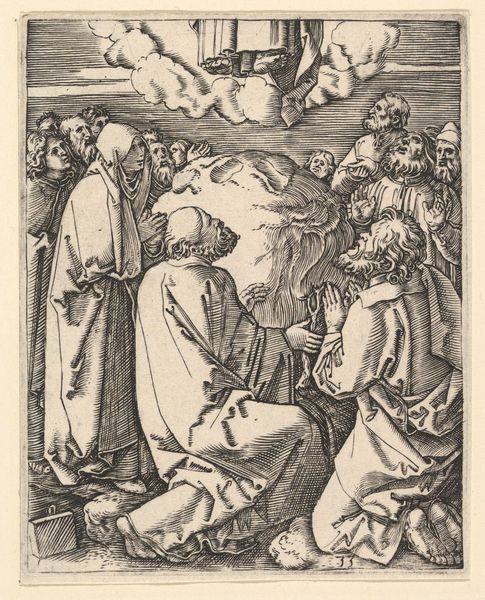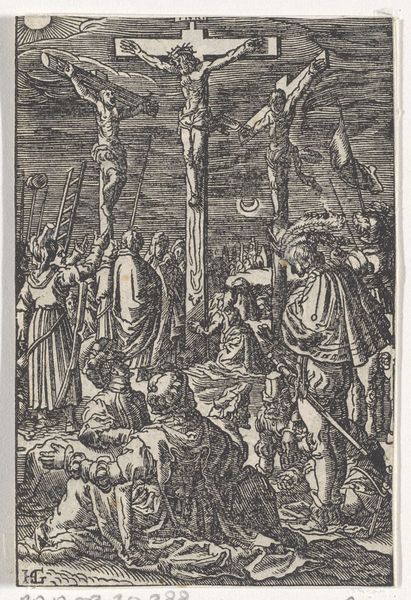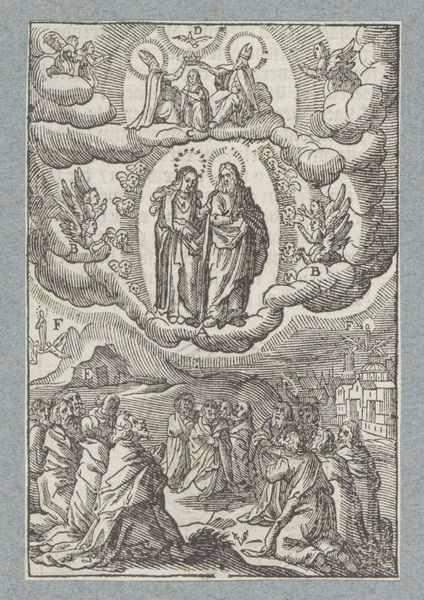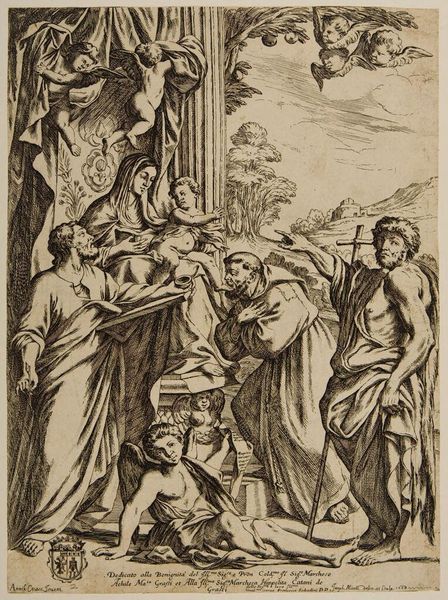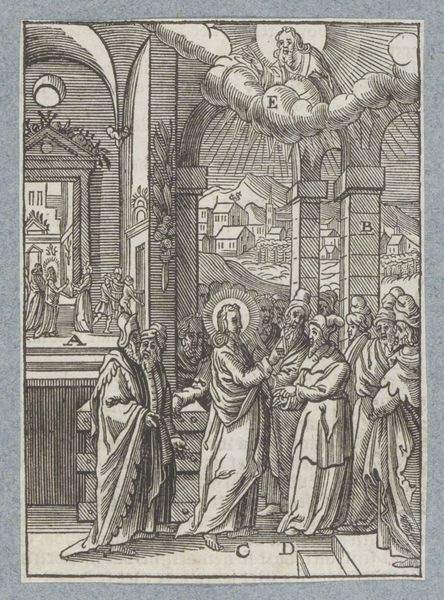
print, engraving
# print
#
figuration
#
group-portraits
#
line
#
history-painting
#
northern-renaissance
#
engraving
Dimensions: height 115 mm, width 80 mm
Copyright: Rijks Museum: Open Domain
Curator: Welcome. We are looking at “Maria met haar ouders Joachim en Anna” which translates to “Mary with her parents Joachim and Anne” an engraving by Christoffel van Sichem II, created in 1629. It's currently part of the Rijksmuseum's collection. What's your first impression? Editor: The high contrast in the line work immediately grabs my attention. The textures created by the varying densities of lines almost overwhelm the figures, creating a somber, reverential atmosphere, wouldn't you agree? Curator: It's interesting you say that. Looking at this from a materialist perspective, the printmaking process is crucial. Consider the labor involved in producing this level of detail on a metal plate and think about the print's function in disseminating religious imagery during the period and for whom these works were made. It speaks to the commercial aspects and how religious narratives were consumed. Editor: From a formalist viewpoint, consider the way Van Sichem employs line to define form and volume, how light and shadow are suggested solely through the density and direction of these lines, giving this a uniquely stylistic impression. The composition directs the eye upwards, starting from the text at the base towards the symbolic Holy Spirit. Curator: And below the dove sits Mary with Joachim and Anne, but look closely at the supporting cast. While their family shows commitment, note also the musical instruments being played. This adds to the idea of production in workshops, reflecting an increased production of such popular objects. These works served to reinforce societal structures. The act of creating and disseminating images became a means of controlling information and consolidating authority. Editor: I see that, yet can we ignore the symbolic resonance created by the interplay between earthly and divine? The composition guides us, grounding in Mary, linking earthly lineage to a higher spiritual realm, as indicated through carefully organized formal choices such as light, density, and even composition. Curator: Both spiritual and material dimensions interact in the art, with an equal push and pull as society entered a changing new phase of more standardized image dissemination and, therefore, a changing consciousness. It invites questions of labor, religious devotion, and commercial interests—a complex interplay of the period. Editor: Indeed. The print shows us how even seemingly simple artworks yield incredible depth through nuanced aesthetic appreciation. Thanks for exploring these layers with me!
Comments
No comments
Be the first to comment and join the conversation on the ultimate creative platform.
